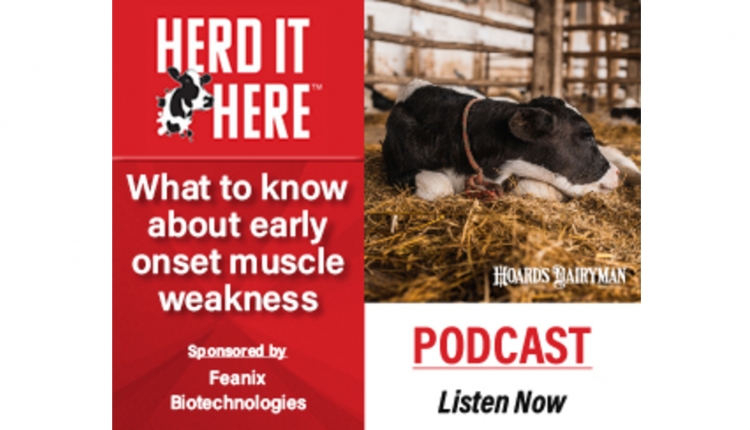
Three “young” bulls
Those three bulls are Round Oak Rag Apple Elevation, Pawnee Farm Arlinda Chief, and Penstate Ivanhoe Star. Approximately 51 percent of sires born this decade can be traced to Elevation, and his sire lineage can be traced to a bull named Neptune H born in 1880. Chief and Penstate Ivanhoe Star can be traced to a bull named Hulleman who was born in 1881.
Chief is responsible for nearly all of the Hulleman descendants, and approximately 49 percent of bulls born this decade trace through Chief. We may well look back at this decade as the end of Penstate Ivanhoe Star’s male lineage as he is currently responsible for less than 1 percent of active Holstein A.I. sires compared to more than 10 percent in the 1990s.
What is most striking about the potential loss of Penstate Ivanhoe Star’s male lineage is his sire, Osborndale Ivanhoe, is considered by many to be the “father of the Holstein breed.” Ivanhoe is still well represented in Holstein pedigrees as he is the grandsire of Elevation through his daughter Round Oak Ivanhoe Eve. Ivanhoe also has many descendants through Penstate Ivanhoe Star and grandson Carlin-M Ivanhoe Bell, just not through a sire lineage.
The genetic relationship of Ivanhoe to today’s typical Holstein cow is about 10 percent, which simply means that 10 percent of Ivanhoe’s genes are the same as what we would find in an average modern Holstein. This compares with a relationship of approximately 14 percent with modern Holsteins cows for both Chief and Elevation.
Carried two lethal genes
The rapid decline of the Ivanhoe male lineage is due largely to the fact that Penstate Ivanhoe Star and his son Bell carried two lethal genetic conditions — BLAD (through Ivanhoe) and CVM (through Penstate Ivanhoe Star’s dam). Bull studs began eliminating bulls that carried the defects and, subsequently, culled many of the Ivanhoe line’s male descendants.
While the rapid decline in male lineages is alarming, it is important to keep in mind that many bulls have contributed to genetic variation in Holsteins through their female descendants. Because dairy producers are primarily concerned with the genetic potential of cows, it is not clear that the limited male lineages present any real challenges for Holstein breeders.
The one area where there appears to be a lack of variation, however, is the Y chromosome. The male sex chromosome is only inherited through male lineages. There is potential for variation to be added to the Y through mutation and a small amount of recombination with the X chromosome during the formation of sperm, but it is likely to be limited in scope. Genes on the Y are related to male reproductive performance and masculinity. Genes on other chromosomes do contribute to a male’s reproductive performance, but the lack of Y chromosome variation does limit how much we could select for improved male reproductive performance to some degree.
While we can trace all current sires through two male lineages, there are at least two others that were in existence as late as the 1960s. Those bulls are Netherland Prince and Netherland Jacob, both born in 1880. Semen from both of these lineages is currently in storage as part of the NAGP (National Animal Germplasm Program) of USDA. The NAGP maintains a germplasm repository for a wide range of livestock, poultry and fish. The purpose of NAGP is to promote the conservation of potentially valuable genetic diversity and to promote research that characterizes genetic resources in the U.S.
The effort of NAGP to collect semen from long-lost bulls has created an opportunity to rescue these male lineages. NAGP is partnering with Penn State and Select Sires to reestablish these two male lines and build upon steps taken by others to preserve genetic material from previous generations. Semen from one of the bulls we’re using to reconstitute the lost lineages was donated to NAGP by ABS Global. The University of Minnesota donated semen to NAGP that will be used to reconstitute the second lost lineage. The University of Minnesota conducted a long-term selection experiment to compare modern genetics with those from the 1960s, and this bull was born during that experiment.
The short-term objective of the project is to allow for the evaluation of Y chromosome variation and to facilitate research trials to determine if such variation is associated with male reproductive performance parameters. Generally speaking, we know less about Y chromosome genes than those in the rest of the genome.
May rediscover value
In the long term, this effort may result in the reintroduction of lost genetic diversity that is of value to dairy producers. We know, for instance, that there have been large declines in female fertility since the 1960s, and we may be able to capture genetic variation that can be reintroduced to modern Holstein lineages to improve fertility. Older lines are also expected to produce much less milk and have poorer udder conformation, so the success of reintroducing genetic material to modern lineages remains to be seen. It is more feasible with the help of genomic selection, but it will take many years for such a result to have an appreciable impact.
Change occurs rapidly
The rapid loss of male lineages in Holsteins demonstrates how quickly we can shift and concentrate the genetic identity of livestock breeds. Those changes have allowed us to produce milk much more efficiently, but the loss of genetic diversity makes inbreeding more difficult to avoid, and programs such as NAGP help serve as a valuable genetic insurance policy.










